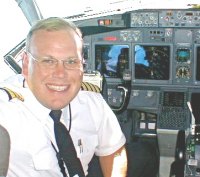This Forum is a place for Piper Comanche pilots to communicate and discuss technical issues
If you join or reset a password, please check your Spam Email box for emails from Admin at ComancheTechTalk.com
Please put your questions on the forum as well so everyone can read and respond. Someone else might be having similar questions.
All questions or topics on the Forums automatically get sent to the Tech team as well.
Fuel Tanks PA24-250
Not sure if it is my imagination but it seems like my engine runs rougher while drawing form the auxiliary tanks. Nothing shows up on instruments but I think I notice a difference.
Also any cruise above 7000' at 2400 RPM my MAP maxes out at 20" Is this normal?
I would like to comment that this is an incredible touring plane. I love it.
- Brad Hewlett
- Posts: 2
- Joined: Fri Oct 23, 2015 10:29 pm
Re: Fuel Tanks PA24-250
As for MP, at 7K, I would expect about 22-22.5" with typical intake drag and standard sea level barometric pressure. I would suspect a faulty MP gauge more than any other issue. On the ground with the engine shut down, it should read the current barometric sea level pressure, minus approx one inch per 1000 feet of field elevation. That is a good first check. They can also be non linear in their errors though so that is not definitive, but will show if the needle has sprung one way or the other.
Zach

Zach Grant L1011jock- Technical Advisor
- Posts: 1404
- Joined: Mon Mar 22, 2004 4:35 pm
- Location: Indianapolis KEYE
Re: Fuel Tanks PA24-250
I have my AME coming out tomorrow night. to check these and a few other things.
Will let you know what he discovers.
- Brad Hewlett
- Posts: 2
- Joined: Fri Oct 23, 2015 10:29 pm
Re: Fuel Tanks PA24-250
I can be reached at c-flhv@magtech.ca
Don Ostergard
Drumheller AB
(403) 823-0405
- Don Ostergard
- ICS BOD member

- Posts: 63
- Joined: Sat Nov 20, 2004 6:59 pm
Re: Fuel Tanks PA24-250
- Timothy Quigley
- Posts: 30
- Joined: Sun Sep 22, 2013 4:40 am
Re: Fuel Tanks PA24-250

William Hughes- Posts: 97
- Joined: Mon Apr 21, 2014 9:23 pm
- Location: Saskatoon, SK


